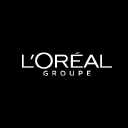What Makes The Chinese Beauty Market A Desirable One For Global Beauty Leaders?
According to a Morgan Stanley report, currently China is the biggest cosmetics market in the world. Even though 2016 was a slow year for luxury beauty brands many of which saw their rankings fall according to UK-based consultancy, Brand Finance, their stories have been quite different in China. While the mass cosmetics sales growth surpassed that of luxury cosmetics in the rest of the world, the scene was the opposite in China, according to Zhang Fei, Brand Finance’s Cosmetics Analyst. Along with the rise of the upper middle class segment of the population in China, the aspiration to lead a luxurious lifestyle has led Chinese beauty users to opt for premium beauty brands more than the mundane mass products even in the backdrop of a weak economy. The economic slowdown in China might lead to a slightly slower growth in luxury beauty sales in the future, according to Zhang, however, the overall market will continue performing well on account of the improved standards of living and increased aspirations towards beauty and personal care. Let us take a look at the Chinese beauty market and see the factors that might lead global beauty leaders to invest in this market.
Unique Demands And Growth Through Acquisitions
Though China promises good opportunities for luxury beauty, it is also important for international brands to understand the unique needs and trends in China’s beauty market which might differ significantly from the Western beauty markets. For example, protection from sunburn or whitening skincare are in raging demand in China. Additionally, China’s domestic brands with a better knowledge of indigenous demands are better positioned to provide tough competition to the foreign brands such as L’Oreal and Estee Lauder. In 2014, L’Oreal acquired Magic Holdings, one of the prominent skincare brands in China to deeper penetrate the market. Strategic alliances and acquisitions are a great way for foreign brands to capture a bigger share of this market.
- Is There More Room For Growth In L’Oreal Stock?
- After Underperforming The Markets, Can L’Oreal Stock Rally?
- L’Oreal Stock Poised For Bounce Back After Rough Month?
- After Dismal Performance Last Month, L’Oreal Stock Looks Set To Rebound
- L’Oreal Stock Looks Set For A Rally On The Back Of Strong Earnings Growth
- Forecast Of The Day: L’Oreal Makeup Revenues
International Cosmetics Demand Is On The Rise Due To Rise In Overseas Travel And E-Commerce
The purchase of domestic cosmetics in China had been falling since 2014, currently cross border e-commerce and overseas purchases comprise around 30% the total spending on cosmetics. Along with the rise of the Chinese overseas travelers, their cosmetics spending overseas can become a significant part of the international beauty companies’ revenues. One of the greatest factors that encourage overseas spending on cosmetics is lower prices. Sometimes, luxury cosmetics could be available at a lower price internationally because of the import duty levied on them in one’s own country of residence.
Editor’s Note: We care deeply about your inputs, and want to ensure our content is increasingly more useful to you. Please let us know what/why you liked or disliked in this article, and importantly, alternative analyses you want to see. Drop us a line at content@trefis.com
See More at Trefis | View Interactive Institutional Research (Powered by Trefis)
